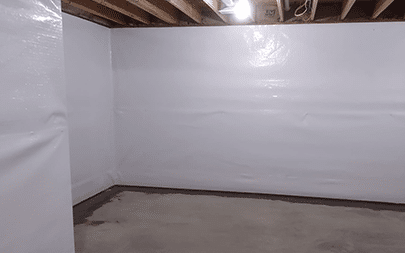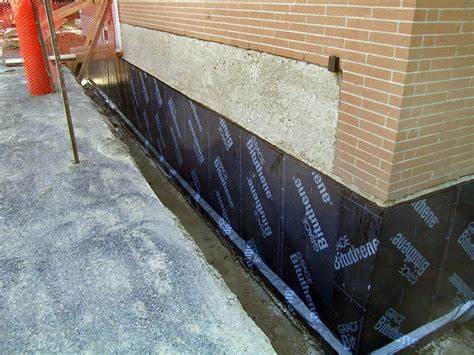Exactly How Cellar Waterproofing Functions: A Comprehensive Guide for Your Home
Basement waterproofing is crucial for protecting homes from water damage. Numerous approaches exist to address moisture issues, each customized to certain reasons. Home owners must comprehend these choices to select the finest remedy for their needs - Sump Pump Installation And Replacement. The performance of these approaches relies upon the best products and strategies. What are one of the most common techniques, and just how can they be applied successfully? This overview will check out these crucial aspects
Understanding the Sources Of Cellar Wetness
Although basements are frequently made to be functional and completely dry spaces, they can come down with dampness as a result of various variables. One primary reason is bad drainage around the foundation, which can result in water merging and seepage. In addition, hefty rains or quick snowmelt can overwhelm drainage systems, aggravating wetness concerns. One more substantial factor is the natural moisture present in the ground, which can penetrate via wall surfaces and floors, particularly in older homes with less effective obstacles. Cracks in the structure may likewise permit water intrusion, specifically during durations of hefty precipitation. In addition, pipes leakages within the basement can add to moisture build-up, creating a setting for mold development. Poor ventilation can catch moisture, intensifying the general dampness problem. Comprehending these causes is crucial for house owners looking for reliable solutions to stop basement wetness problems.
Kinds of Cellar Waterproofing Techniques
Basement waterproofing approaches are important for safeguarding homes from dampness damages and preserving a secure living atmosphere. These approaches can be broadly classified into interior and external solutions. Inside waterproofing generally includes the installation of drainage systems, sump pumps, and vapor obstacles. These systems function to draw away water away from the cellar and avoid moisture from penetrating through the walls or floor.On the other hand, outside waterproofing concentrates on stopping water from entering the home in the starting point. This can consist of excavation around the foundation, using waterproof layers, and mounting drain floor tiles to redirect water away from the framework. Furthermore, some home owners might go with a combination of both indoor and external approaches to ensure complete defense. Eventually, the choice of waterproofing approach depends on the specific conditions of the home and the level of dampness existing in the cellar.
Materials Used in Waterproofing Solutions

Various products are utilized in waterproofing options to improve the efficiency of both external and indoor techniques. Frequently used products include liquid membrane layers, which produce a seamless obstacle versus wetness. These membrane layers are generally made from polyurethane or rubberized asphalt, providing adaptability and durability. In addition, cementitious waterproofing products are preferred for their ease of application and solid bond to surfaces.For outside applications, materials such as drainage boards and geotextiles work in rerouting water far from foundations. Squashed stone and gravel are additionally utilized in drain systems, promoting appropriate water circulation and decreasing pressure accumulation. Sometimes, specialized layers and sealants, like silicone or epoxy, are put on supply added protection against water seepage. Together, these materials play an essential role in ensuring that a cellar stays dry and safeguarded from water damage.
Steps to Waterproof Your Cellar
Waterproofing a cellar entails a systematic approach to successfully protect against water intrusion and damages. The very first step is to check the exterior of the home, looking for splits or gaps in the structure. These must be secured with a suitable water resistant sealer. Next, verify that seamless gutters and downspouts are working properly and directing water far from the foundation.After addressing exterior problems, the inside ought to be assessed. Mounting a water resistant membrane on cellar wall surfaces can offer extra protection. Water Solutions Omaha. It's likewise recommended to implement a sump pump system to manage any water accumulation.Finally, rating the landscape around the home can assist direct water far from the foundation, more decreasing the threat of water infiltration. By following these actions faithfully, home owners can produce a durable defense versus basement flooding and moisture issues
Upkeep and Prevention Tips for a Dry Basement
Normal upkeep and proactive measures are vital to making certain a dry cellar long after preliminary waterproofing efforts. House owners ought to routinely check rain gutters and downspouts, ensuring they direct water away from the foundation. It is vital to keep these clear of debris to stop overflow. Furthermore, preserving proper rating around the home aids channel water away from the structure.Checking for splits in walls Our site or floorings is crucial, as these can allow moisture infiltration. Any type of identified cracks need to be promptly secured with appropriate materials. In addition, setting up a sump pump can supply additional protection against flooding.Humidity levels in the cellar ought to also be kept track of, as high humidity can bring about mold and mildew development. Utilizing a dehumidifier can aid preserve a comfy atmosphere. Lastly, guaranteeing appropriate ventilation in the basement aids in decreasing wetness accumulation, protecting the honesty of the waterproofing system gradually.
Frequently Asked Questions
How Much Time Does Cellar Waterproofing Normally Last?
The longevity of cellar waterproofing usually differs based on products and setup quality. Commonly, it can last from 5 to one decade, with some systems potentially enduring longer if effectively preserved and monitored in time.
Can I Waterproof My Cellar Myself?
The individual considered whether to water-proof their cellar individually. While do it yourself options exist, they call for knowledge of products and techniques. Professional services ensure effective outcomes, often exceeding the potential threats and obstacles connected with self-installation.

What Are the Signs of Inadequate Waterproofing?
Indicators of inadequate waterproofing consist of consistent moisture, mold growth, moldy smells, peeling paint, and water discolorations on wall surfaces or floors. House owners must attend to these problems quickly to avoid additional damages and maintain a healthy and balanced living atmosphere.

Does Basement Waterproofing Rise Home Value?
Cellar waterproofing can boost a home's value by stopping water damage and improving habitable area. Prospective buyers typically prioritize dry cellars, making waterproofing an important investment that adds to total building allure and marketability.
How Much Does Cellar Waterproofing Price usually?
The ordinary cost of cellar waterproofing usually ranges from $1,500 to $5,000, varying based on aspects such as project dimension, approach made use of, and neighborhood market problems. House owners need to get multiple quotes for accurate quotes. Cellar waterproofing is essential for safeguarding homes from water damage. Cellar waterproofing techniques click are crucial for shielding homes from moisture damage and keeping a safe living environment. These systems work to draw away water away from the basement and protect against wetness from permeating via the wall surfaces website here or floor.On the various other hand, exterior waterproofing focuses on avoiding water from entering the home in the initial place. The long life of cellar waterproofing frequently varies based on products and installment quality. Cellar waterproofing can boost a home's worth by avoiding water damages and enhancing comfortable space.